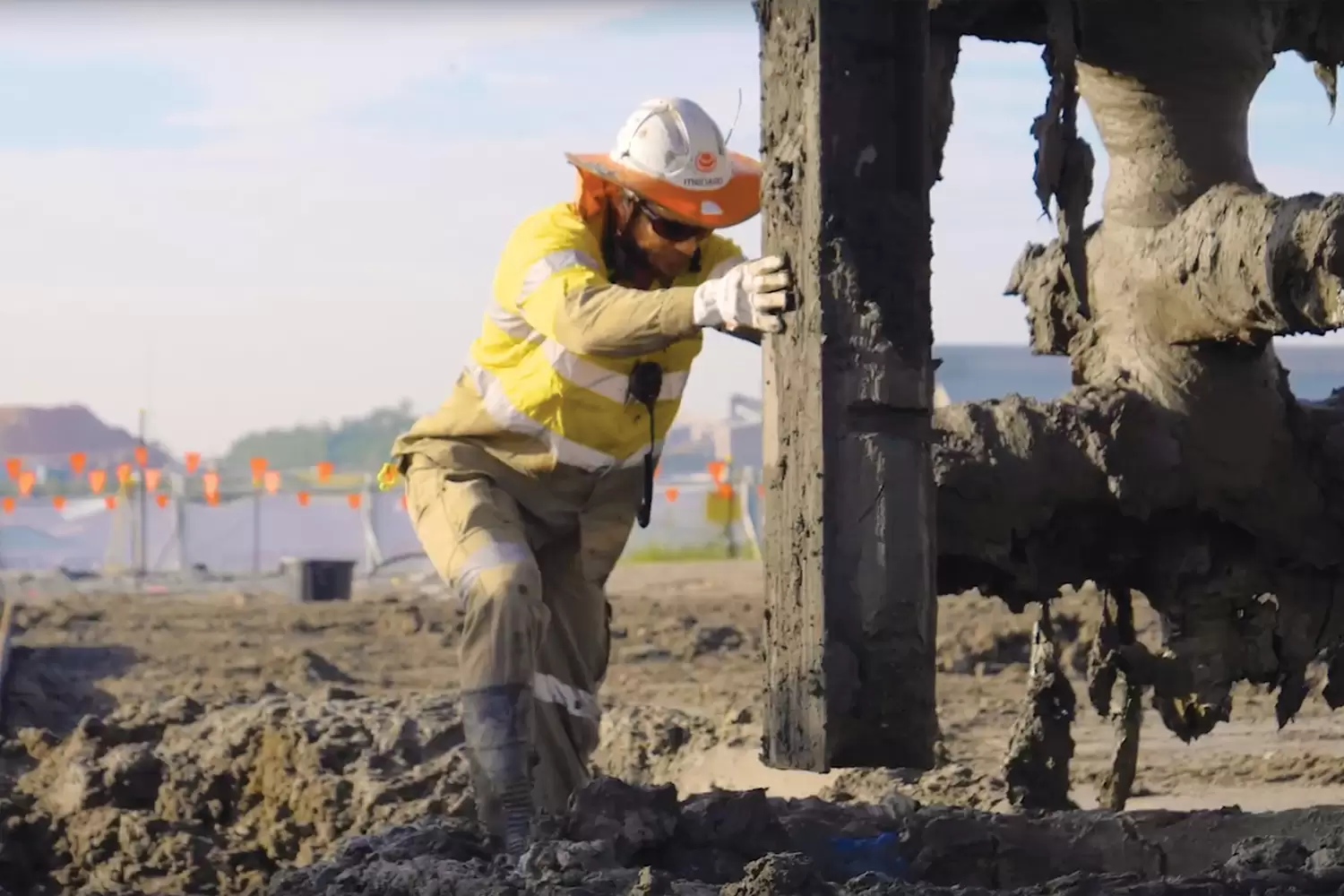A host of innovative technical solutions are underlying a new addition to Brisbane’s port infrastructure.
Brisbane International Cruise Terminal (BICT) was approved two years ago and is scheduled to open October 2020.
According to the Queensland Government, it will be the state’s first mega cruise ship terminal, accommodating liners up to 270 m, and creating $5 billion in value in its first 15 years.
Ground improvement work was awarded to specialist firm Menard Oceania, which has been engaged in projects with the Port of Brisbane since 2003.
The tender package for BICT came in with drawings showing fully suspended structures on precast driven piles, recalls Adam Zakrzewski, Business Development Engineer at Menard Oceania.
“When I saw that, I reviewed the geology and I knew that we could offer something better, more cost effective, for these kinds of conditions,” Zakrzewski told create.
“And I developed a high-level concept design, priced it, submitted it to the head contractors, and got their interest, because they realised that they can provide a lot of savings to the clients.”
Hybrid theory
The eventual winning design used a “hybrid solution” of two ground-improvement techniques: deep soil mixing (DSM) columns and controlled modulus columns (CMCs).
“[CMCs] are typically designed for settlement control, and they are excellent because they are much cheaper than conventional piling systems but provide very good control of the building settlements,” explains Zakrzewski.
He added that the downside is their slenderness — generally between 320 and 450 mm in diameter — and a weakness against lateral loads.
“There was a requirement to provide sufficient lateral resistance to the building’s cores that was due to high wind loads that needed to be considered by the designers, [and] also potential earthquake events,” Zakrewski said.
“DSM columns, on the other hand, can be designed to take up those lateral loads, and that’s how we approached it. We basically designed kind of shear boxes underneath the building cores, to provide [resistance], made of DSM columns.”
The CMCs at BICT were installed to depths up to 32 m below surface level.
CMC and DSM
The CMC concept was developed in France in the 1990s. It is often deployed where schedules are tight, and the ground is soft or contaminated, as it produces almost no spoil.
According to an article by Nicholson Construction’s Frederic Masse, the columns “often have lower load concentrations, tighter spacings, or shallower depths than a comparable piled foundation”.
The load is spread more widely among the grout columns, like a “bed of nails”, and shared with the soil.
DSM was developed in Japan and Scandinavia in the 1970s. The in-situ method uses a blade to stir cement slurry or powder through soil to make soil-cement, which sets.

Typical diameters for these are between 0.6 m to 1.5 m, notes Zakrzewski; however, diameters up to 3 m can be achieved in suitable conditions.
“At the BICT project we installed 1.5 m diameter DSM columns to depths up to 12 m below ground surface level,” he added.
“[CMCs] are typically spaced on a regular rectangular grid [and] the spacing of the CMC is typically between 1.5 m to 3.0 m. DSM columns were installed as overlapping columns to form shear walls capable of resisting high lateral loads and overturning moments.”
The combined solution had to create a foundation in 5 m of compact dredged soil, underlain by 32 m of compressible alluvial soil.
Long-term settlements had to be limited to under 50 mm.
A tight timetable was a further challenge, with the works awarded in February 2019 and started this past April, leaving little time for detailed design.
“During construction we also had the challenge of actually drilling through that sand to install the CMCs … working with several drilling rigs on such a constrained space, in a safe manner,” said Zakrzewski, adding that the “most important thing is always to do the work safely”.
“With three rigs running around on a fairly small area; well, that becomes a challenge to make sure it’s safe for everyone. The piling rigs were 90 t machines, with masts 30 or 32 m high. It requires a lot of attention and the right procedures in place.”
Mixed methods
Menard Oceania Business Development Engineer Adam Zakrzewski values being able to innovate in his role at a company that specialises in 17 different core techniques.
He started his career in the building sector following a civil engineering degree at Warsaw University of Technology, then moved on to bridge engineering.
A move to Australia was also a move into geotechnical work as a design engineer at Menard Oceania.
Zakrzewski’s first big Australian project was on the Ichthys LNG project in Darwin — in design and then as a technical manager.
His hybrid approach to the Brisbane International Container Terminal has applicability elsewhere, he’s sure, but every project must be looked at separately.
“These techniques, they’re not applicable to all ground conditions, obviously, and not to all structures, but there is a certain market for it,” Zakrzewski said.
“It’s a balance of the client’s budget, the ground conditions and the designer’s performance specifications for the works.”